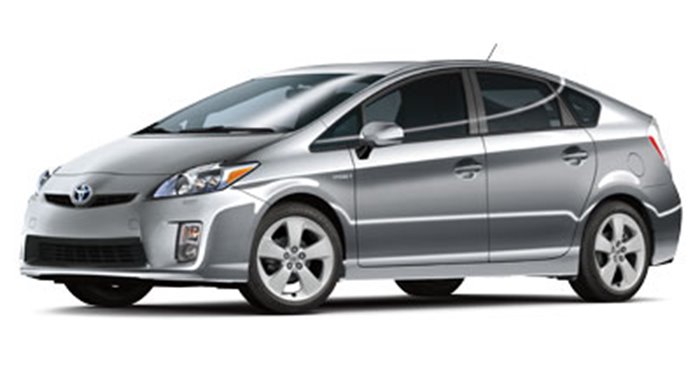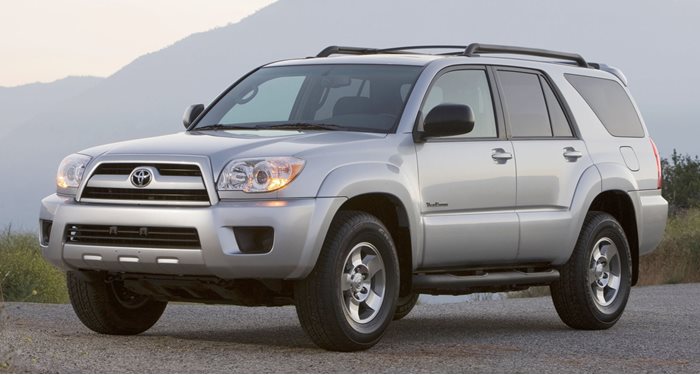The VK56DE naturally aspirated 5.6-liter V8 has a fairly similar construction to the VQ with its aluminum block and heads featuring molybdenum-coated pistons and a dual overhead cam controlling its continuously variable valve-timing system on the intake valves. The camshafts are micro-finished while the cylinder liners are ductile iron to increase durability. In the Pathfinder, fuel is delivered to the system via a multi-point injection system. The VK56DE is known to struggle with its timing chain, exhaust manifolds, and valve-cover gasket oil leaks.
The VK56DE's timing-chain problem is due to extensive elongation, which can also strain the tensioners. Nissan addressed this problem in 2012 with a new chain and tensioner kit but the cost of replacement is hefty. Once your chain starts to wear, you'll notice squeaking and rattling noises, an illuminated Check Engine light, a loss of power, and poor engine performance.
The VK56DE also struggles with cracking exhaust manifolds. The frequent heating and cooling will result in the metal fatigue setting in over time, leading to cracks. This will then lead to leaking exhaust gasses. Once this occurs, you'll notice ticking noises, a raw exhaust smell from the engine bay, and an illuminated Check Engine light. The only way to resolve this is by having new manifolds fitted, which is a very expensive and labor-intensive job.
Oil leaks on the VK56DE are a result of gaskets that wear with age and use. Like the VQ40DE, the valve-cover gaskets appear to be the most problematic but all gaskets and rubbers will develop cracks with age and lead to visible oil leaks. If oil leaks onto hot engine components, you'll also notice burning-oil smells and puffs of smoke from the engine bay. The only way to resolve this is by replacing the affected gaskets.
When given bad-quality gas, the VK56DE can also struggle with a blocked catalytic converter, which will send cat fragments into the engine via the exhaust valves, rapidly wearing the cylinder walls and internals, and increasing oil and gas consumption. Once this occurs, you'll notice misfiring, a rough idle, hard starting, and frequent stalling. It is advised that you replace the standard upper catalytic converter with a high-flow part, which might be illegal in some states because it will increase the engine's emissions and may cause it to fail emissions tests; however, it will put an end to the problem.
Mileage: Timing-chain problems on the VK56DE may occur after 100,000 miles. Exhaust manifolds may start to crack from 120,000-160,000 miles. Gaskets and seals may start to wear after 100,000 miles. Clogging of the catalytic converter can occur after 60,000 miles.
Cost: A new timing chain and tensioner kit is likely to cost $3,500 for parts and labor. A new exhaust manifold fitment may cost $3,000 for parts and labor. Gasket replacements may range from $200 to $1,400 depending on which one needs to be exchanged. A high-flow catalytic converter will cost $1,900 for parts and labor.
How to spot: A bad timing chain will lead to squeaking and rattling noises, a loss of power, and poor engine performance. Ticking noises, raw exhaust smells, and an illuminated Check Engine light point to a cracked exhaust manifold. Leaking gaskets and seals will lead to visible oil leaks, a burning-oil smell, and a smoking engine bay. Catalytic converter problems will result in an increase in oil and gas consumption, misfiring, a rough idle, hard starting, and stalling.















 Acura
Acura
 Alfa Romeo
Alfa Romeo
 Aston Martin
Aston Martin
 Audi
Audi
 Automobili Pininfarina
Automobili Pininfarina
 Bentley
Bentley
 BMW
BMW
 Bollinger
Bollinger
 BrightDrop
BrightDrop
 Bugatti
Bugatti
 Buick
Buick
 Cadillac
Cadillac
 Caterham
Caterham
 Chevrolet
Chevrolet
 Chrysler
Chrysler
 Dodge
Dodge
 Ferrari
Ferrari
 Fiat
Fiat
 Fisker
Fisker
 Ford
Ford
 Genesis
Genesis
 GMC
GMC
 Gordon Murray Automotive
Gordon Murray Automotive
 Hennessey
Hennessey
 Honda
Honda
 Hyundai
Hyundai
 Ineos Automotive
Ineos Automotive
 Infiniti
Infiniti
 Jaguar
Jaguar
 Jeep
Jeep
 Karma
Karma
 Kia
Kia
 Koenigsegg
Koenigsegg
 Lamborghini
Lamborghini
 Land Rover
Land Rover
 Lexus
Lexus
 Lincoln
Lincoln
 Lordstown
Lordstown
 Lotus
Lotus
 Lucid Motors
Lucid Motors
 Maserati
Maserati
 Mazda
Mazda
 McLaren
McLaren
 Mercedes-Benz
Mercedes-Benz
 Mini
Mini
 Mitsubishi
Mitsubishi
 Nissan
Nissan
 Pagani
Pagani
 Polestar
Polestar
 Porsche
Porsche
 Ram
Ram
 Rimac
Rimac
 Rivian
Rivian
 Rolls-Royce
Rolls-Royce
 Spyker
Spyker
 Subaru
Subaru
 Tesla
Tesla
 Toyota
Toyota
 VinFast
VinFast
 Volkswagen
Volkswagen
 Volvo
Volvo